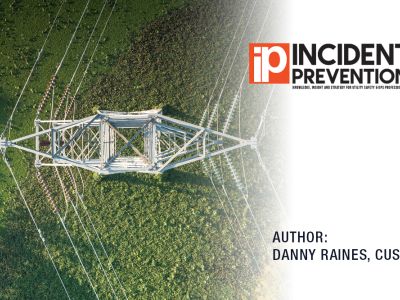
Advancing Safety Through Total Well-Being: Practical Tips and Ideas for Utility Leaders
Over the past 50 years, the electric utility industry has developed and implemented robust engineering controls, detailed work procedures and focused training to reduce injury and fatality rates among workers. However, the total well-being of the worker is another critical safety factor that utility organizations often don’t address. Well-being encompasses physical health as well as […]

Equipotential Grounding for URD Work
I have written about grounding for the protection of employees numerous times in Incident Prevention magazine, addressing both the law and other issues. Let’s begin this installment with the understanding that “grounding for the protection of employees” – which is the phrase OSHA uses – means establishing an equipotential zone or EPZ. The purpose of […]

The Evolution of Personal Protective Grounding: Part 1
Personal protective grounding, or PPG, is arguably the most critical safety procedure affecting contemporary lineworkers. Over time, it has evolved to include numerous significant elements that contribute to the success of today’s comprehensive methods and procedures. To adequately address these elements, this article will be presented in two parts. Part one, which you are now […]

Safety By Design: Human and Organizational Performance
The first three articles in this six-part series addressed the critical nature and value of an organizational safety management system (SMS) that engages all employees and effectively mitigates risks through a developed plan for continuous improvement. This article focuses on human and organizational performance (HOP), an operational philosophy that utility organizations must incorporate into their […]

Clearing Up Confusion About Host-Contractor Relationships
In my consulting work, I’ve found there is some industry confusion regarding the relationship between a host utility and an independent contractor company. To help provide clarity, I’m going to kick off this installment of “Voice of Experience” with an overview of each party’s obligations from an OSHA perspective. A contract employee performs work covered […]

August-September 2025 Q&A
Q: If a crew is setting a steel pole between energized phases (69 kV), would the 3.29-foot minimum approach distance found in OSHA Table 6 apply, or should we defer to the 15-foot clearance? A: Setting poles is new construction that OSHA covers in 29 CFR 1926.960, Table V-5, “Alternative Minimum Approach Distances for Voltages […]

Your Response Matters … A Lot
How you respond to other people and events matters. It matters a lot. Your responses – both as a leader and a member of the TEAM (Together Everyone Accomplishes More) – impact every part of your life, including culture, relationships and safety. Let’s start with this: “Responding” is a task. To perform the task well, […]

